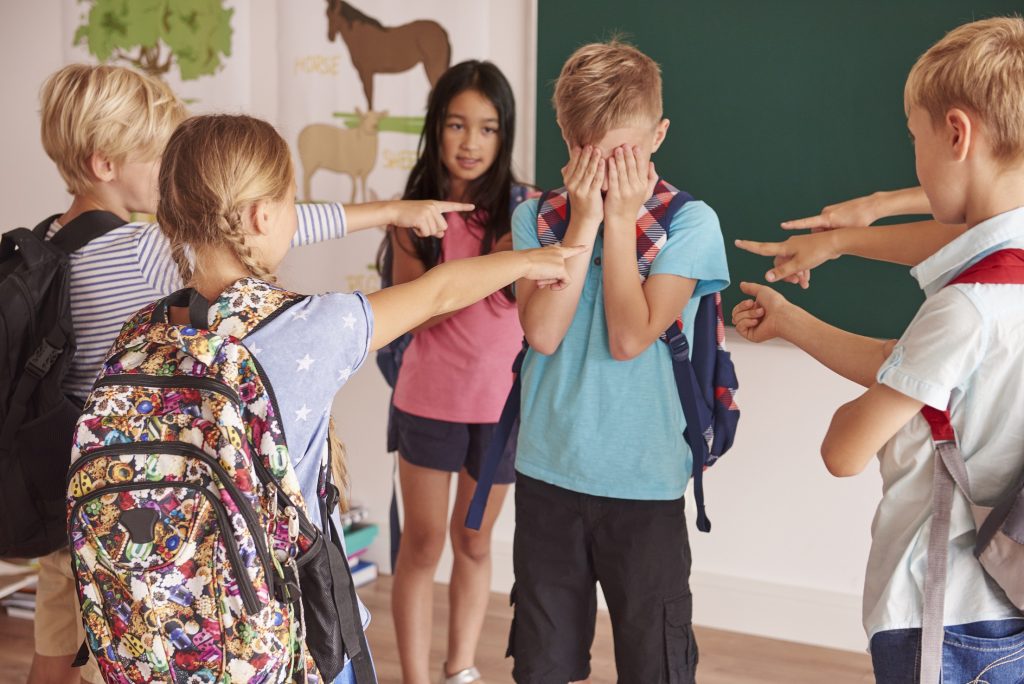Bullying
The violence is any act that, by action or omission, causes or may cause harm. Within this phenomenon we find the bullying defined in 1970 by Olweus, who indicated that a student is harassed or victimized when he is repeatedly exposed to negative actions by one or more students, without capacity, nor effective tools, to be able to defend himself.
Therefore, it is presented to us as that conduct harassment, intimidation, abuse, persecution, harassment and physical, psychological and moral aggression, which occurs repeatedly by a student or group of students over another or others. It would, therefore, constitute a type of punishment violence, where there is one or more executors and one or more victims.
Programs for intervention at the national level
- The Peer Tutoring (TEI) program
It was created in Spain in 2002 and since then it has been implemented in some schools in Spain, both public and private. The professor in Psychology and Pedagogy, Andrés González Bellido He devised it to involve boys and girls in coexistence and to ensure that they were neither executors nor accomplices of mistreatment of classmates.
It is based on emotional tutoring between equals, based on respect, empathy and commitment as basic pillars of their development in the schools. So, the dynamics of this are as follows:
- In Secondary: 3rd year students are emotional guardians of 1st year students
- In Primary: 5th grade students are emotional guardians of 3rd grade students
- In Childish: 5-year-old students are emotional guardians of 3-year-old students.
The objectives of said program are, among others:
- Enable the awareness of the entire educational community about the effects of violence.
- Promote and implement actions empathy and individual commitment between the class group, so that spectators do not reinforce the harassment and empathize with the suffering of the victims.
- Favor the ZERO TOLERANCE in cases of bullying.

The theoretical principles that support this program are:
- AVE Program
The AVE program was tested in the Priority Care centers of the Community of Madrid between 2005 and 2008 in a program promoted by the Ministry of Education and the School Council of the Community of Madrid, achieving a reduction of more than 80% in school acts and violence. . To detect bullying, its authors, Iñaki Piñuel and Óscar Cortijo, propose the application of the AVE test and subsequently carry out a continuous evaluation and intervention protocol. According to these authors, these types of programs must be based on empirical evidence and not merely on good will or common sense.
They carry out a diagnosis and critique of the existing programs or actions for the prevention and intervention of bullying, starting this program from a series of dynamics in the schools that implement it, based on the 6 solid principles of the program:
- Create in schools a culture of care and rejection of bullying and school violence and socially unacceptable behavior.
- Promote a culture of zero tolerance to bullying and school violence in schools through active involvement and the protagonism of the students themselves as guarantors of the application of the program.
- Provide centers with the necessary psychological tools for anticipation and early response to the behaviors that generate cases of violence or bullying.
- Implement the periodic evaluation of the phenomenon of bullying and school violence.
- Identify early behaviors and possible cases of violence and/or bullying and react quickly and forcefully.
- Establish a risk map that determines the type of performances preventive measures in each of the classrooms. How to prevent bullying at school.

Why bullying intervention programs are important in mediation.
The mediation school becomes one of the main prevention and intervention strategies in school violence, allowing students to observe conflict as part of social interaction, but in no case as a basis for violence towards others.
It is convenient to point out that the phenomenon of bullying is increasingly located in the lower part of the Galtung triangle, that is, as part of structural and cultural violence. Especially with the indiscriminate use of ICT that makes its social legitimation possible. Therefore, it is our professional duty as mediators to make this violence visible and to do so, the programs discussed in this post can help us significantly.
Some key guidelines to detect and promote awareness and promote effective school mediation, which prevents bullying, are, among others:
- Observe which people may be possible victims, knowing the characteristics they generally present. Help us with a sociogram to apply in the classrooms, for greater scientificity.
- Detect possible cases of harassment in time, at the beginning. This will ensure that, with effective intervention, they will not become cases of bullying.
- Listen, help and advise colleagues who may be in this situation on ways to act in these cases. Teach specific techniques to potential harassers and victims:
- Don't shrink, look for eye contact.
- Be kind, but not submissive.
- Don't laugh when others make a fool of you.
- Say clearly what you want and what you don't want.
- Don't beg to be understood.
- Teach first aid and relaxation techniques to both victims and harassers, in the event of a potential abuse situation.
- Communicate as soon as possible the suspicion about the existence of these cases both in the physical and virtual space: to a teacher, a member of the Mediation Team, the Tutor, the Head of Studies, the Counselor or psychologist, etc.
All of this will enhance a culture of conflict management to promote the implementation of the indicated programs and, with it, the detection and intervention of cases where violence between equals exists, or may exist.
Do you want to get started in the world of mediation? Do it with the best professionals and in the leading school in the sector.




